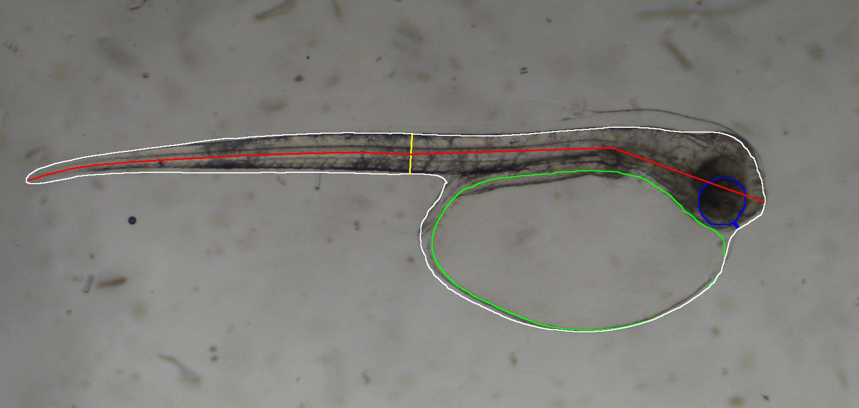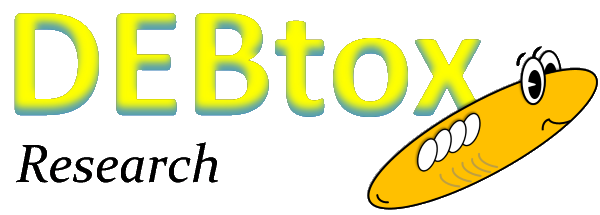Description
The DiTail research project will investigate the exposure
and effects in the pelagic ecosystem in Norwegian fjords
resulting from marine tailing disposal (MTD), addressing the
thematic priority area in the MARINFORSK call: "Pollution
and other effects on marine ecosystems: The mineral
industry". There is an urgent need for improved knowledge
about the spreading of minerals processing waste and
associated chemicals, and their impact on ecosystems as a
whole and on individual species and populations. DiTail
addresses this need with the following research activities:
- Investigation of potential lethal and sublethal
effects of MTD on sensitive life stages of key species
in Norwegian fjord ecosystems under relevant exposure
scenarios.
- Experimental assessment of effects on molecular and
individual organisation levels.
- Development of biological models of individual
life-cycle energy budgets to infer effects of MTD on
development, growth, and reproduction.
- Assessment of flocculation potential of MTD and its
effect on spreading of mining waste.
- Development of models to simulate the physical
processes of spreading and deposition of MTD in fjords.
- Modelling the exposure and effects of egg and larvae
bioparticles in a fjord system to infer risk in terms of
reduced recruitment to local populations of the studied
species.
The project focusses on impacts in the pelagic environment.
However, the generated data and models will also provide
information for tailing implications on the sea floor, and
thus for effects on benthic ecosystems and impacts resulting
from deep-sea mining.
My role
Using DEB-based
models to identify the energetic processes targeted by
the various components involved in marine tailing disposal
(the physiological or metabolic mode of action). The effects
of single components can subsequently be used in the model
to make predictions for their combined effects. Comparing
the predictions to the actual result from mixture toxicity
testing will provide clear indications of whether
interactions (either synergistic or antagonistic) should be
considered for the joint effect. Ultimately, these effect
models can be linked to the fate models, and serve as tools
for prospective risk assessment, to predict potential
impacts on species under various realistic exposure
scenarios. The focus in this project is with copepods (Calanus
finmarchicus) and fish eggs (Atlantic Cod, Gadus
morhua). For C. finmarchicus, we depart from
the model previously developed in the ENERGYBAR project, for
the fish eggs we start with the work on snail eggs (Barsi et al.,
2014; Jager
et al., 2013).
The DiTail project brings together experts on DEB modelling
and molecular techniques, offering an excellent opportunity
to identify the mechanistic links between changes at the
molecular level and changes to the abstract energetic fluxes
in DEB models, and furthermore to changes in life-history
traits over time. Establishing this linkage is especially
interesting, as it may ultimately lead to accurate
predictions for effects on individuals from a suite of
simple biomarkers (see Jager &
Hansen, 2013; Jager,
2016; Ashauer
& Jager, 2018).
|

Calanus finmarchicus.

Cod larva, with lines drawn for biometrical measurements.
|
Output: Publications (as first or co-author)
- Jager T, R Nepstad, BH Hansen and J Farkas (2018).
Simple energy-budget model for yolk-feeding stages of
Atlantic cod (Gadus morhua). Ecological Modelling
385:213–219. DOI 10.1016/j.ecolmodel.2018.08.003
- Svendheim LH, PA Olsvik, IB Øverjordet, T Jager, TM
Ciesielski, T Nordtug, T Kristensen, BH Hansen, B
Kvæstad, D Altin and J Farkas (2021). Investigating the
effects of marine tailing exposure on the development,
growth, and lipid accumulation of Calanus
finmarchicus. Chemosphere 282:131051. DOI https://doi.org/10.1016/j.chemosphere.2021.131051
- Farkas J, LH Svendheim, T Jager, T Ciesielski, T
Nordtug, B Kvæstad, BH Hansen, T Kristensen, D Altin, PA
Olsvik (2021). Exposure to low environmental copper
concentrations does not affect survival and development
in Atlantic cod (Gadus morhua) early life stages.
Toxicology Reports 8:1909-1916. https://doi.org/10.1016/j.toxrep.2021.11.012.
- Farkas J, LH Svendheim, IB Øverjordet, EJ Davies, D
Altin, T Nordtug, PA Olsvik, T Jager, BH Hansen (2023).
Effects of mine tailing exposure on the development of
early life stages of the marine copepod Calanus
finmarchicus. J. Toxicol. Environ. Health Part A.
https://doi.org/10.1080/15287394.2023.2274935.
- ...
Output: Presentations (as presenter and as contributor)
- Simple energy-budget model for yolk-feeding life
stages; a case study for Atlantic cod. Jager T, R
Nepstad, BH Hansen and Julia Farkas. Poster presentation
at the at the 29th
SETAC Europe conference in Helsinki, Finland,
26-30 May 2019 (presented by Julia). Abstract.
Handout.
- Impacts of mine tailings on early life stages of cod
and haddock. Farkas J, LH Svendheim, BH
Hansen, ED Amico, T Nordtug, T
Kristensen, E Davies, B Kvæstad, T
Jager, PA Olsvik. Poster presentation at the at the
29th SETAC Europe
conference in Helsinki, Finland, 26-30 May 2019. Download
from ResearchGate.
- Effects of CaCO3
mine tailings on the marine
copepod Calanus finmarchicus. Farkas
J, IB Øverjordet, BH Hansen, T
Nordtug, LH Svendheim, T Kristensen, D
Altin, R Nepstad, E Davies, T
Jager, PA Olsvik. Poster presentation at the at the
29th SETAC Europe
conference in Helsinki, Finland, 26-30 May 2019. Download
from ResearchGate.
- Energy-budget modelling for early-life stages of
Atlantic cod. Jager T, LH Svendheim, B Kvæstad, R
Nepstad, BH Hansen, J Farkas. Poster presentation at the
at the 30th SETAC
Europe conference in virtual space, 3-7 May 2020.
Abstract.
Handout.
- Exposure to low environmental copper concentrations
does not affect survival and development in Atlantic cod
(Gadus morhua) early life stages. Farkas J, LH
Svendheim, T Jager, T Ciesielski, T Nordtug, B Kvæstad,
BH Hansen, T Kristensen and PA Olsvik. Poster
presentation for the 31st SETAC Europe
conference in virtual space, 3-6 May 2021. Handout.
- ...
|



